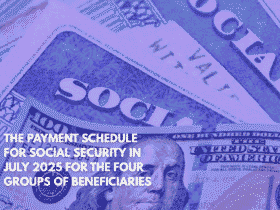For millions of Americans, Social Security checks are a key source of income after retirement. These monthly payments help cover essentials like rent, groceries, medical bills, and other daily expenses. In 2025, the maximum monthly Social Security benefit has been confirmed at $5,108, offering financial relief for those who qualify.
This change is part of the government’s effort to adjust payments for inflation and correct old policies that reduced benefits for some workers unfairly. If you’re nearing retirement or planning ahead, here’s what you need to know to get the most out of your Social Security benefits.
Who Can Get the $5,108 Maximum Social Security Benefit?
The $5,108 monthly check is the maximum amount a retiree can receive in 2025. But not everyone will qualify for this full amount. To get it, you must meet all of the following:
- Worked for at least 35 years
- Paid maximum Social Security taxes each year (2025’s taxable income cap is over $175,000)
- Waited until age 70 to start collecting Social Security
Missing even one of these can lower your monthly payment, but there are still ways to increase your benefit.
How to Increase Your Social Security Payment
1. Work at Least 35 Years
Social Security calculates your benefits using your 35 highest-earning years. If you worked fewer years, the missing years are counted as $0, reducing your average and your monthly check.
Tip: Even part-time work during your later years can help replace earlier low-income years.
2. Earn More Over Time
If your income goes up each year—especially if it reaches or exceeds the Social Security income limit—your benefit amount will grow.
Example: Someone earning $160,000 yearly will likely get more than someone earning $70,000.
3. Wait Until Age 70 to Claim
You can start collecting Social Security at age 62, but doing so will reduce your check permanently. Each year you wait increases your benefit—up to age 70.
Example: A person eligible for $3,000 at age 67 can get over $3,800 if they wait until 70.
4. Plan With Your Spouse
If you’re married, plan how you and your spouse will claim benefits. One may qualify for spousal benefits, which could be up to 50% of the other’s payment.
What’s New in 2025? Social Security Fairness Act
In January 2025, a major new law was passed: the Social Security Fairness Act. This law removed two old rules that unfairly reduced benefits for many public workers like teachers and police officers:
These rules often cut benefits for people who paid into both a public pension and Social Security. Now, more than 3 million retirees will get higher benefits. Some may even get retroactive payments averaging $6,710.
Who Gets Paid on March 26, 2025?
The Social Security Administration (SSA) sends payments based on your birthdate and when you started receiving benefits.
If you:
- Were born between the 21st and 31st of any month
- Started receiving benefits after May 1997
- Do not receive SSI (Supplemental Security Income)
Then your March 2025 check will be sent on Wednesday, March 26.
How to Check Your Social Security Payments
To manage your benefits easily, create a “my Social Security” account online. This account lets you:
- Check your payment schedule
- View your earnings record
- Estimate your benefits for different retirement ages
- Spot errors early
Visit: ssa.gov/myaccount
Common Mistakes to Avoid
1. Claiming Too Early
Taking Social Security at age 62 could reduce your monthly check by up to 30%. Unless you really need the money, consider waiting.
2. Relying Only on Social Security
These checks usually cover only about 40% of your pre-retirement income. It’s smart to also have savings, a pension, or investments.
3. Not Checking Your Earnings Record
Mistakes in your record can lower your future benefits. Review your Social Security statement each year and correct any errors.











Leave a Reply